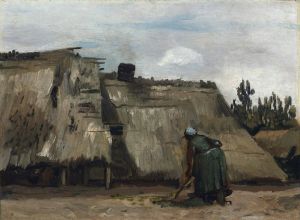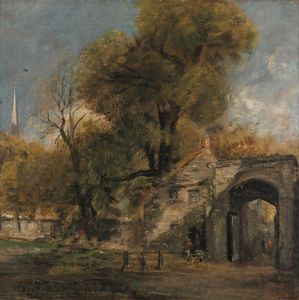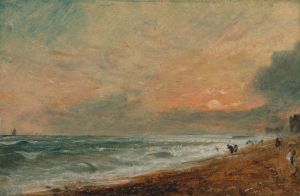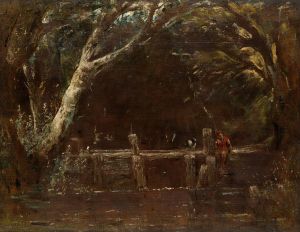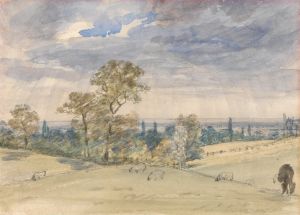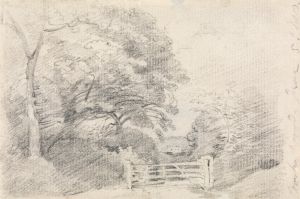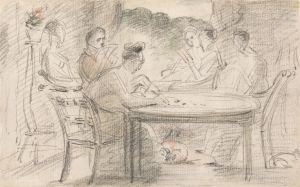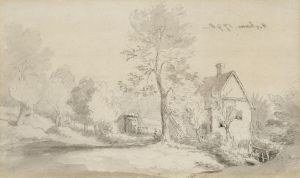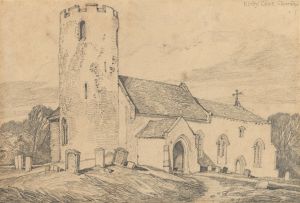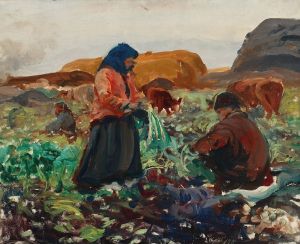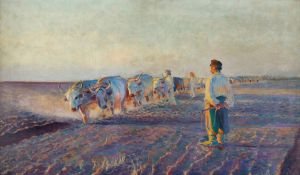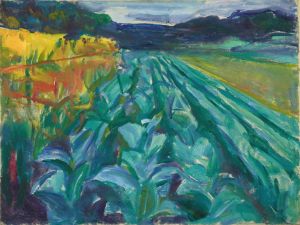
Ploughing Scene in Suffolk
A hand-painted replica of John Constable’s masterpiece Ploughing Scene in Suffolk, meticulously crafted by professional artists to capture the true essence of the original. Each piece is created with museum-quality canvas and rare mineral pigments, carefully painted by experienced artists with delicate brushstrokes and rich, layered colors to perfectly recreate the texture of the original artwork. Unlike machine-printed reproductions, this hand-painted version brings the painting to life, infused with the artist’s emotions and skill in every stroke. Whether for personal collection or home decoration, it instantly elevates the artistic atmosphere of any space.
John Constable's Ploughing Scene in Suffolk is a painting created by the renowned English Romantic painter John Constable (1776–1837). Known for his dedication to capturing the natural beauty of the English countryside, Constable often drew inspiration from the landscapes of his native Suffolk, an area he referred to as the "scenes of my boyhood." This painting is one of many works that reflect his deep connection to the rural environment and his innovative approach to landscape art.
The artwork depicts a rural scene in Suffolk, featuring a ploughman guiding his team of horses across a field. The composition highlights Constable's characteristic attention to detail and his ability to convey the textures and atmosphere of the countryside. The painting captures the essence of agricultural life in early 19th-century England, showcasing Constable's interest in the everyday labor and natural beauty of rural settings. The sky, a recurring focal point in Constable's work, is rendered with dynamic brushstrokes, reflecting his fascination with the changing effects of light and weather.
Constable's approach to landscape painting was revolutionary for his time. Unlike many of his contemporaries, who often idealized nature, Constable sought to depict it with authenticity and emotional resonance. He frequently worked outdoors, creating sketches and studies directly from nature, which he later used as references for his larger studio works. This dedication to realism and his innovative use of color and texture helped establish him as one of the leading figures in the Romantic movement.
The exact date of Ploughing Scene in Suffolk is not definitively documented, but it is consistent with Constable's body of work from the early 19th century. During this period, he produced numerous paintings and sketches of rural life, many of which were inspired by the landscapes around Dedham Vale and the River Stour, areas now often referred to as "Constable Country." These works were instrumental in elevating the status of landscape painting in England.
Today, Ploughing Scene in Suffolk is recognized as an example of Constable's ability to blend technical skill with a deep emotional connection to his subject matter. The painting reflects his commitment to portraying the natural world with honesty and reverence, qualities that continue to resonate with audiences and art historians alike.





